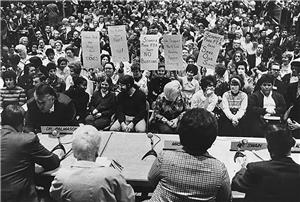On November 11, 1970, the Seattle School Board adopts a Middle School Desegregation Plan calling for mandatory busing to achieve racial balance in four of the city's middle schools.
The action came after months of debate, demonstrations pro and con, and threats of lawsuits from one side or another. Given the contentious nature of the issue, board members moved into secret session to cast their votes at 7:30 a.m., announcing the decision during a press conference at 4 p.m. that afternoon.
The board considered several plans before settling on one targeting middle schools. It rejected a proposal to enlarge the planned desegregation zone and include elementary and high schools as well as middle schools. Instead, the board limited the desegregation effort to one middle school in the predominately black Central Area and three in the predominately white North End.
Although some civil rights activists expressed disappointment with the plan, others praised it. Alfred E. Cowles, a member of the board and also executive secretary of the State Board Against Discrimination, said the action "may very well be the finest hour in the educational history of the city" (The Seattle Times). Roy Wilkins, executive director of the National Association for the Advancement of Colored People (NAACP), visiting Seattle a few days later, said "I'd like to pin a medal on every school board member here" (The Seattle Times).
However, an anti-busing group called Citizens Against Mandatory Busing immediately filed suit against the plan, delaying its implementation for almost two years, until September 6, 1972. The next year, the group gathered enough signatures to trigger a recall election targeting four School Board members who had voted for the plan. The recall attempt failed, but by a margin of less than 1 percent.

